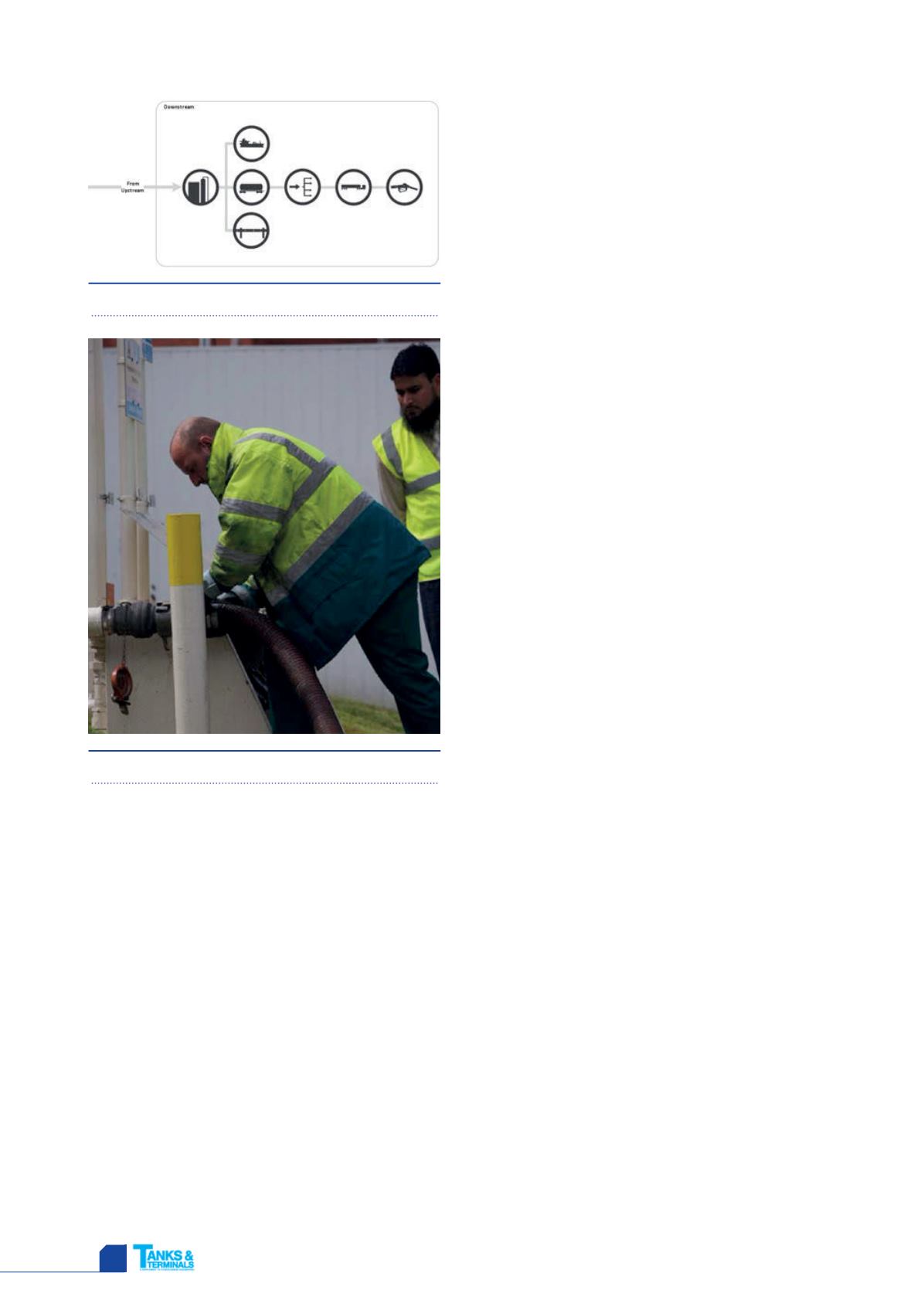
HYDROCARBON
ENGINEERING
66
onward sale through retail sites. Owing to the number of
companies involved in the distribution and marketing of
fuels, there is a need to ensure that a consistently high
level of competency is maintained. For this reason, the
industry has spearheaded the development of several
schemes to improve skills and safety:
n
A safe loading pass scheme (SLPS) for petrol tankers.
n
A petroleum driver passport (PDP) for petrol tanker
drivers.
n
A petrol retail safety passport for contractors
working at petrol stations.
n
A petrol retail operator training guidance for
personnel working at petrol stations.
The safe loading pass scheme
Demonstrating that risks are being managed in
accordance with CoMAH can be challenging when
equipment used in hazardous operations is not
permanently located or controlled by a site. This is the
case with petrol tankers entering and exiting a
petroleum terminal. For this reason, the SLPS has been
introduced in the UK.
The scheme is an industry created, owned and
managed code of practice and consists of an inspection
of road tankers’ parameters against agreed standards. It
can form part of a CoMAH demonstration to the UK
regulator, identifying how major accident hazards are
managed, and compliments existing vehicle inspection
law, as defined under ADR. It is recognised by members of
the UK Petroleum Industry Association (UKPIA) and the
Tank Storage Association (TSA), which together represent
the majority of petroleum terminals in the UK. These
participating sites enforce the scheme at the terminal’s
entry point through verification of the validity of the SLP.
The SLPS sets standards for a road tanker inspection
to provide additional assurance to a terminal operator
that the vehicle is safe to load fuel. These checks are
carried out every six months and include an inspection
of:
n
Electrical equipment and electrical continuity
(i.e lights, work lamps and aftermarket equipment).
n
General equipment (i.e tyres and fire extinguishers).
n
Tank and tank top (i.e general condition, foot-valves,
drainage, manhole covers and pipework).
n
Tank internal (i.e overfill protection sensors and
breather valves).
n
Control system (i.e control cabinets, anti-drive away
function, guard bars and foot valve operation).
n
Labels and hazard panels.
n
Loading connections (i.e loading adapters and
overfill protection system sockets).
To maintain a high level of consistency and quality,
only those workshops that meet the scheme’s standards,
and technicians who have passed the scheme’s training
course, are permitted to carry out a road tanker
inspection and issue a SLP.
Since the scheme’s launch in 2015, 62 workshops
have been successfully assessed, more than 200
technicians have been trained and over 5500 passes
have been issued.
Petroleum driver passport
The PDP is a UK wide scheme that ensures that all
petroleum tanker drivers are trained and assessed to a
consistent industry standard. It is a voluntary scheme,
backed by the UK Government, which has been designed
and implemented by industry. The PDP is a driver card,
which all petroleum tanker drivers should have
regardless of their employer, type of vehicles, grade(s)
of petroleum product, or loading point.
The scheme has been developed to provide the
knowledge and skills required by a petroleum tanker
driver that are not covered by ADR. Therefore, it has
been designed to sit alongside existing tanker driver
regulation and has a five year renewal cycle, in line with
an ADR licence.
At the heart of the PDP is a standard, which specifies
all of the required knowledge and practical skills for a
petroleum tanker driver. To gain their passport, drivers
must attend classroom training and pass both a written
assessment and a practical on the road assessment.
Figure 1.
The fuels supply chain.
Figure 2.
Tanker delivery.


